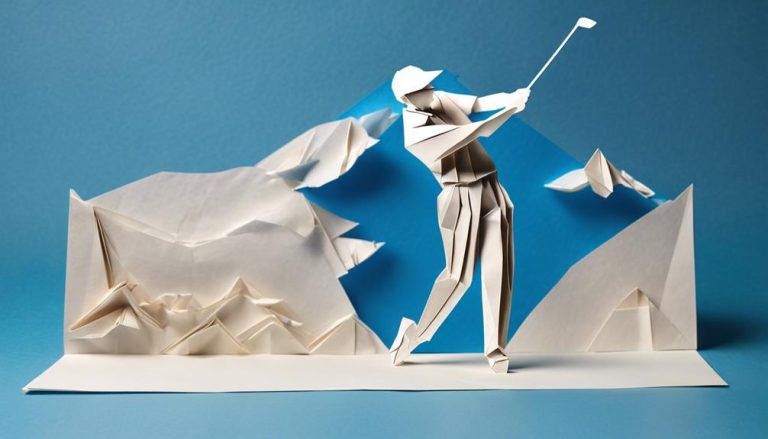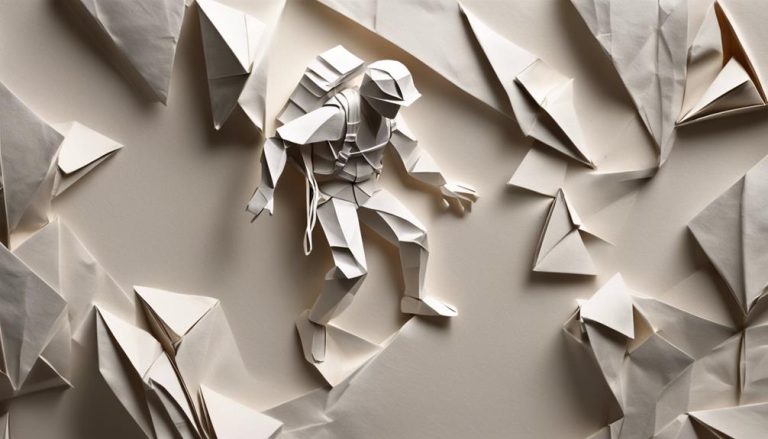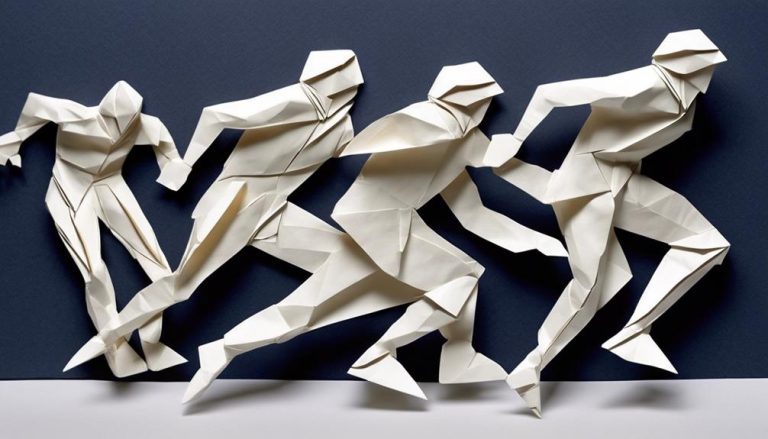General Rules of Kneeboarding
Imagine kneeboarding as a dance between you and the water, where each move is a step towards mastering the rhythm of the waves. As you glide across the surface, it's important to remember the general rules that govern this aquatic art. From selecting the right equipment to perfecting your balance and executing advanced tricks, there's a world of knowledge waiting for you to explore. So, are you ready to enhance your kneeboarding skills and plunge into the depths of this exhilarating sport?
Proper Equipment Selection
When kneeboarding, selecting the proper equipment is important for ensuring a safe and enjoyable experience. To start, make sure your kneeboard is in good condition by regularly checking for any signs of damage or wear. Equipment maintenance is vital for your safety on the water. Inspect the straps, bindings, and board itself before each use to avoid any accidents that could result from faulty gear.
In addition to maintaining your kneeboard, it is essential to invest in the right safety gear. A well-fitting life jacket is non-negotiable when kneeboarding. Make sure it is approved by relevant safety authorities and fits snugly to provide adequate protection in case of a fall. Wearing a helmet is also highly recommended to protect your head from any impacts with the water's surface or the board.
When it comes to safety gear suggestions, consider wearing a wetsuit to keep you warm and protected from the elements. Moreover, don't forget about sunscreen to shield your skin from harmful UV rays while out on the water. By prioritizing equipment maintenance and choosing the right safety gear, you can set yourself up for a successful and secure kneeboarding experience.
Body Position and Balance
To maintain proper body position and balance while kneeboarding, focus on positioning your knees securely on the board and keeping your weight centered to prevent tipping or losing control. Important weight distribution is key to stability on the kneeboard. Make sure your weight is evenly distributed between both knees, keeping your center of gravity low to the board. By doing so, you enhance stability and reduce the risk of falling off or losing balance.
Flexibility plays a critical role in maintaining control while kneeboarding. Your body should be relaxed and adaptable to the movements of the board and the water. Keep your core engaged but flexible, allowing you to adjust to changes in speed or direction smoothly. This flexibility enables you to react swiftly to the board's movements, helping you stay balanced and in control.
Additionally, maintaining a strong and balanced posture is essential for stability. Keep your back straight, shoulders relaxed, and gaze forward to center your balance. Avoid leaning too far back or forward, as this can disrupt your equilibrium and lead to instability. By focusing on these aspects of body position and balance, you can enhance your kneeboarding experience, feeling more confident and in control on the water.
Mastering the Start
Initiate your kneeboarding session by positioning yourself on the board with your knees securely placed and your weight evenly distributed for best stability. Ensuring a proper starting position and weight distribution is crucial for a successful start in kneeboarding. When you are ready to begin, follow these steps for a smooth start:
| Step | Action | Tips |
|---|---|---|
| 1. | Start on your knees on the kneeboard. | Keep your back straight for balance. |
| 2. | Place your hands on the handle. | Grip the handle firmly but comfortably. |
| 3. | Lean slightly forward. | This helps with maintaining momentum. |
| 4. | Signal the driver that you are ready. | Use clear and agreed-upon signals. |
| 5. | Once you feel the pull, gradually stand up. | Use your core for stability. |
Turning Techniques
For effective turning techniques while kneeboarding, focus on shifting your weight and using the edges of the board to carve smoothly through the water. Proper weight distribution is key to maintaining balance and control during turns. Here are some tips to help you master turning on your kneeboard:
- Weight Distribution: Lean into the direction of your turn by shifting your weight towards the inside rail of the board. This helps initiate the turn and keeps your knees bent for better stability.
- Speed Control: Adjust your speed before entering a turn. Slowing down can make turning easier and more controlled, while speeding up can help you carve sharper turns.
- Wave Selection: Choose the right wave to turn on. Look for waves with a clean face and a good shape that will allow you to maneuver smoothly.
- Carving Techniques: Use your body and the edges of the board to carve through the water. Engage your core muscles and lean into the turn to create a smooth arc.
- Practice: The more you practice turning, the better you will become. Experiment with different techniques and practice on various types of waves to improve your skills.
Safety Precautions
Ensuring your safety while kneeboarding is paramount to enjoying this exhilarating water sport to the fullest. Common injuries associated with kneeboarding include strains or sprains in the knees, shoulders, or back, as well as contusions from falling. To prevent these injuries, proper warm-up exercises focusing on flexibility and strength in the core, legs, and arms are essential. Additionally, always wear a well-fitted life jacket to stay afloat in case of a fall.
When kneeboarding, it is pivotal to maintain a safe distance from other watercraft and obstacles to avoid collisions that could result in serious injuries. Always be aware of your surroundings and follow the water regulations of the area where you are kneeboarding to guarantee a safe experience for yourself and others.
To further prevent injuries, make sure your kneeboard is in good condition with secure foot straps and a padded deck to cushion falls. Regularly inspect the equipment for any signs of wear and tear that could compromise your safety while kneeboarding.
Advanced Tricks and Tips
To enhance your kneeboarding skills, mastering advanced tricks and tips can elevate your performance on the water. As you progress in your kneeboarding journey, incorporating these strategies into your practice routine will help you excel and reach your full potential in competitions.
- Trick Advancement: Start by mastering the basics like 180s and 360s before advancing to more challenging tricks like backflips and spins. Building a strong foundation is essential to revealing more complex maneuvers.
- Competition Strategies: Understand the scoring criteria for kneeboarding competitions and tailor your run to maximize points. Combining technical tricks with style and fluidity can impress the judges and give you a competitive advantage.
- Body Positioning: Pay attention to your body positioning during tricks. Keeping your weight centered and using your arms for balance can help you maintain control and stability on the water.
- Edge Control: Practice controlling your edges to execute sharp turns and tricks with precision. Learning to manipulate your board's edges will allow you to carve through the water effortlessly.
- Consistent Practice: Consistency is key to mastering advanced kneeboarding tricks. Dedicate time to practice regularly and focus on improving specific skills to progress steadily.
Maintenance and Care
Taking care of your kneeboard properly is important to guarantee its longevity and peak performance on the water. To ascertain your kneeboard stays in top condition, regular cleaning is essential. After each use, rinse your kneeboard with fresh water to remove any salt, sand, or debris that could cause damage over time. Use a mild soap or kneeboard cleaner to gently scrub the surface and remove any stubborn stains. Avoid harsh chemicals that could deteriorate the materials of your kneeboard.
When it comes to storage maintenance, always keep your kneeboard in a cool, dry place away from direct sunlight. Prolonged exposure to sunlight can cause the materials to fade and weaken. Consider investing in a kneeboard bag or cover to protect it from dust, scratches, and any accidental damage when not in use. Assure that the kneeboard is stored in a way that prevents heavy objects from pressing down on it, as this could cause warping or damage to its shape.
Frequently Asked Questions
What Are Some Common Mistakes Beginners Make While Kneeboarding?
When kneeboarding, beginners often struggle with maintaining proper posture for balance and control. Remember to focus on safety precautions and practice speed control. By avoiding these common mistakes, you'll enjoy a smoother ride.
Are There Any Specific Stretches or Exercises That Can Help Improve Kneeboarding Skills?
Want to boost your kneeboarding skills? Start with a stretching routine to improve flexibility. Incorporate strength training for power. Balance drills can enhance stability. These exercises will help you ride like a pro!
How Can I Prevent Knee Injuries While Kneeboarding?
To prevent knee injuries while kneeboarding, focus on proper technique. Make sure your stance is balanced, keep your knees slightly bent, and maintain control. Avoid sharp turns at high speeds. Strengthening your leg muscles can also provide added support.
Is It Necessary to Wear a Wetsuit While Kneeboarding?
When kneeboarding in cool waters, wearing a wetsuit is essential for comfort and preventing hypothermia. Safety equipment like a wetsuit guarantees your well-being, regardless of skill level, allowing you to enjoy kneeboarding safely.
Are There Any Specific Hand Signals or Communication Techniques Used While Kneeboarding in a Group?
When kneeboarding in a group, hand signals like pointing left or right, thumbs up for approval, or waving can help with communication. Maintaining eye contact and using clear gestures enhances safety and coordination.






